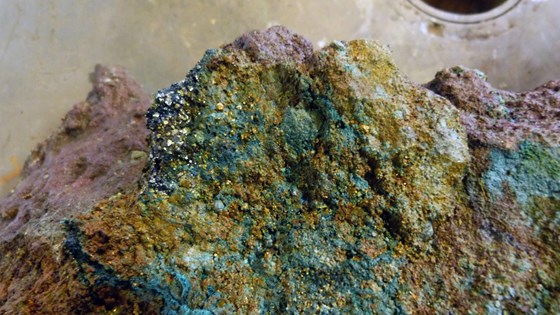Seabed Minerals
Article | Last updated: 10/01/2024 | Ministry of Energy
Mineral avtivities on the seabed may have significant future market potential. The growth in demand for renewable energy sources such as solar, water, and wind increases the need for a variety of minerals. This includes minerals containing rare earth elements that are necessary in the production of wind turbines, solar panels, electric cars, and high-tech products such as mobile phones and computers.
The World Bank and the International Energy Agency (IEA) expect in their scenarios for the transition to a low-emission society that the demand for critical minerals will multiply towards 2050. The increased usage is expected to come from the development of power grids, batteries, but also from wind power and solar panels. The possibility of economically profitable extraction of seabed minerals can therefore help to secure the supply of important metals.
Norway has long experience with business activities related to the sea and responsible resource management. Therefore, we have a good starting point to develop profitable mineral activities on the seabed. Norwegian-based institutions have good prerequisites to become suppliers of knowledge and technology to a possible new industry. Seabed mineral extraction could be important for the Norwegian supplier industry in the future.
On the Norwegian continental shelf, the first discoveries of sulfide deposits (sulfur compounds) were made over 15 years ago. The sulfides come from hot springs in volcanic areas on the seabed where they build up chimney-like structures. The sulfide deposits mainly contain lead, zinc, copper, cobalt, gold, and silver. Later, several deposits of both sulfides and manganese crusts have been identified and sampled in connection with the mapping of the Norwegian Sea by the University of Bergen and the Norwegian Offshore Directorate (formerly the Norwegian Petroleum Directorate).
Manganese crusts are deposited as a laminated coating on bare rock and are mostly found wherever solid rock protrudes from loose sediments on the seabed. Manganese crusts contain mostly manganese and iron, with smaller amounts of cobalt, nickel, titanium, and rare earth elements.
The Norwegian Offshore Directorate has been tasked by the Ministry of Petroleum and Energy to map the potential for seabed minerals on the Norwegian shelf. Survey expeditions conducted in recent years to the deep-sea areas in the Norwegian Sea have yielded very positive results. New fields with several active and inactive hydrothermal systems have been discovered. Samples collected contain interesting metals such as copper, zinc, and cobalt. These are minerals that are important as society increasingly electrifies.
On 22 March 2019 the Norwegian parliament (Storting) enacted Law no. 7 on mineral activities on the continental shelf (The Seabed Minerals Act), which came into force on 1 July 2019. The law is designed to facilitate the exploration and extraction of mineral deposits on the continental shelf in accordance with societal objectives, ensuring that considerations for value creation, the environment, safety of the activities, other business activities, and other interests are taken into account. The law is framed within modern law of the sea. It is based on the state's ownership of mineral resources, and the experiences from other activities on the Norwegian continental shelf.
According to the law, areas must be opened before licenses for exploration and extraction of seabed minerals can be granted. As part of such an opening process, an impact assessment must be conducted. In the spring of 2020, an opening process was initiated, including an impact assessment.
Based on the impact assessment, consultation responses, and the resource assessment from the Norwegian Offshore Directorate, the government in 2023 presented a report to the Storting (government white paper) on the opening of an area on the Norwegian continental shelf for mineral activities and a strategy for the management of seabed mineral resources. The report was considered by the Storting in January 2024.
In the research field, the Ministry Energy has tasked the Research Council of Norway with providing a knowledge base for research and technology development in mineral extraction on the seabed. The report is available here: Knowledge Base for Research and Technology Development in the Field of Seabed Mineral Extraction.
The work of the Research Council is part of the ministry's assessments of the need for a possible R&D effort.
